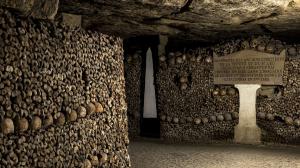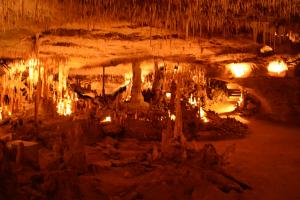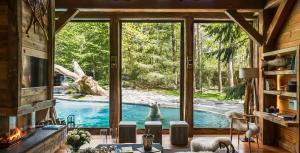Although the stones date from 4500-3300 BCE, modern myths associated them with 1st century AD Roman and later Christian occupations. A Christian myth associated with the stones held that they were pagan soldiers in pursuit of Pope Cornelius when he turned them to stone. Brittany has its own local versions of the Arthurian cycle. Local tradition similarly claims that the reason they stand in such perfectly straight lines is that they are a Roman legion turned to stone by Merlin.
Carnac Megalithic Standing Stones

Morbihan , France
Overview
Although the stones date from 4500-3300 BCE, modern myths associated them with 1st century AD Roman and later Christian occupations. A Christian myth associated with the stones held that they were pagan soldiers in pursuit of Pope Cornelius when he turned them to stone. Brittany has its own local versions of the Arthurian cycle. Local tradition similarly claims that the reason they stand in such perfectly straight lines is that they are a Roman legion turned to stone by Merlin.
things to do
attractions
Similar places in France
Plan your trip to France
Experience the best tours, attractions & activities you won’t want to miss.
Explore attractions in France
Enjoy up to 50% on hotels and restaurants in France
Experience the best tours, attractions & activities you won’t want to miss.
Overview
In our recommendation of places to visit in France, this Tourist Attractions in | Historical places in | leads the conversation. Carnac Megalithic Standing Stones is considered as one of the most important attraction in . For a Tourist Attractions in | Historical places in | it holds some of the most historic artifacts in France. This maybe why it is considered the best Tourist Attractions in France| Historical places in France| by some of the residences. It is impossible to talk about sightseeing in or sightseeing in France without talking about the Carnac Megalithic Standing Stones.
There are so many attractions in France to visit when you are considering things to do in France especially when you are looking at things to do in . So, if you are considering sightseeing in when you are around then this Tourist Attractions in France| Historical places in France| should be top on your list. on its own is seeing as one of the top cities in France when you are looking for things to do in France. Which is why we are not surprised with this Tourist Attractions in France| Historical places in France| , France is seen as one of the most popular in the country. There are other places to go in , however, this place remains one of the most popular amongst tourists. There is no tour guide comprising of places to visit in France that doesn’t have the Carnac Megalithic Standing Stones.

















